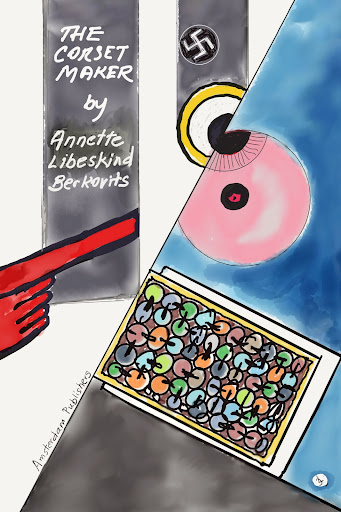 With a cover designed by the author’s brother, Daniel Libeskind, and a compelling story inspired by their mother, the novel is a moving tribute to the bonds that connect us
With a cover designed by the author’s brother, Daniel Libeskind, and a compelling story inspired by their mother, the novel is a moving tribute to the bonds that connect us
New York, NY–The master planner of rebuilding Ground Zero, world-renowned architect Daniel Libeskind, has created a new piece of art for the cover of “The Corset Maker,” the forthcoming historical fiction novel by his sister, author Annette Libeskind Berkovits. The novel–loosely inspired by their mother’s real life story–is a powerful addition to the genre of 20th century historical fiction, and is slated for release on International Women’s Day, March 8, 2022 from Amsterdam Publishers.
In Warsaw, Poland, the young Rifka Berg, raised in an ultra Orthodox home, asks her father why girls don’t have bar mitzvahs. Eventually, his answer provokes Rifka to risk everything. In a bold move, unheard of at the time, Rifka and her close friend, Bronka, open their own business–a corset shop on the most fashionable street in Warsaw. In an unforgettable journey, Rifka soon becomes embroiled in some of the most violent events of the century: the Jewish-Arab conflict in Palestine, the Spanish Civil War and the Nazi occupation of Southern France. As her involvement deepens, she sees firsthand how autocratic rule deprives people of even the simplest freedoms.
Time and again, Rifka is faced with heart-wrenching choices. She must decide if there is ever a time to abandon her principles for a higher purpose. Rifka’s personal struggles and dilemmas go to the heart of the major ethical issues and challenges of our time.
“The Corset Maker”
Annette Libeskind Berkovits | March 8, 2022 | Amsterdam Publishers | Historical Fiction
Hardcover | 9789493231924 | $26.99
Paperback | 9789493231917 | $19.99
Ebook | 9789493231931 | $6.99
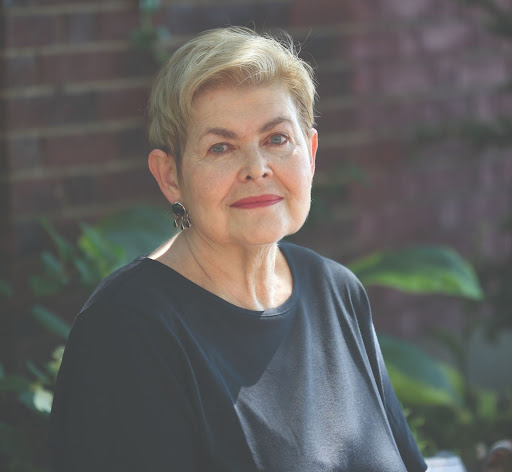 ABOUT THE AUTHOR:
ABOUT THE AUTHOR:
Annette Libeskind Berkovits is the author of two acclaimed memoirs: “In the Unlikeliest of Places: How Nachman Libeskind Survived the Nazis, Gulags and Soviet Communism” a story of her father’s survival, and “Confessions of an Accidental Zoo Curator.” She has also penned a poetry book, “Erythra Thalassa: Brain Disrupted.” “The Corset Maker” is her first novel. To learn more about Annette’s life and work, visit her website: annetteberkovits.com
Follow Annette Libeskind Berkovits on social media:
Facebook: @annettelibeskindberkovitsauthor | Twitter: @ALBerkovits
 ABOUT THE DESIGNER:
ABOUT THE DESIGNER:
Daniel Libeskind is an internationally renowned architect, known for the Jewish Museum in Berlin, the Royal Ontario Museum in Toronto, and the Dublin Performing Arts Center in Ireland, among many others. His Master Plan for rebuilding the World Trade Center site in New York City was selected in 2003 and has served as the blueprint for the entire site, including the Freedom Tower, the Memorial, the Museum, and the PATH Terminal.
Praise for “The Corset Maker”
“‘The Corset Maker’ is a tale of the twentieth century that celebrates human resilience. It
is an enchanting, resonant novel inspired by the life of Dora Libeskind and seen through
the eyes of Rifka. Berkovits weaves a story of a quintessential rebel in times of global
crisis and war. Threads of Nazism, Anti-Semitism, and sexism make for a compelling,
fast-paced narrative that sees a young heroine navigate the world in search of her
destiny.”
—Daniel Libeskind, architect; Founder Studio Daniel Libeskind; Author of a dozen
books including “Breaking Ground” and “Edge of Order;” Berlin and New York
“Annette Libeskind Berkovits has made central moments of twentieth century history
come alive. An Orthodox Jewish girl rebels against her family and becomes an entrepreneur only to face anti-Semitism. She travels to Palestine and Spain and France, each time to survive more violence. Love and violence are at the core of this extraordinary novel. Berkovits fills history with romance.”
—John J. Clayton, award-winning author of “Kuperman’s Fire,” “What Are Friends For,” and “Mitzvah Man;” Leverett, MA
“‘The Corset Maker’ begins in the fall of 1930. Nationalism is surfacing as Europe teeters. In Warsaw Poland 12-year-old Rifka Berg asks her beloved Ultra-Orthodox father why girls don’t have bar mitzvahs. His answer brings about an epiphany that changes the course of her life. Thus begins Rifka’s life’s journey: continents will be crossed, wars will be won, and others lost, there will be love and there will be unspeakable genocide. Even Rifka’s name and identity must change for her to survive, but Rifka’s search for the truth of experience, for the very meaning of life and her place in it will never wane. Timely and more relevant to today than is comfortable. This is the journey of the hero in the truest sense of Joseph Campbell.”
—Jim Cooper, photographer and author of “Funeral in Montauk;” Mosfellsbær, Iceland
“‘The Corset Maker’ is a compelling story of girlhood, war, survival – and against all odds, a story of finding out who you truly are. It is a beautifully written journey that weaves together the personal and the historical. I was gripped by this unique and courageous protagonist – and found myself alongside her throughout the book. It is without a doubt one of the most fascinating and meaningful books I have read.”
—Rachel Arnow, artist and author of “Kinder Kalender,” “All the World From A-Z,” and “The Wild West;” Berlin, Germany
“With her eloquent and captivating writing Annette Berkovits transports one to the riveting saga of survival, resilience, and ingenuity of a young woman from Warsaw, Poland. Set mainly in the twists and turns of the first half of 20 th century Europe, ‘The Corset Maker’ ignites the reader’s imagination of history and brings to life the hard choices and challenges facing young people during that time. The story concludes with an unexpected ending in the last decade of the century. I simply could not put the book down.”
—Zvi Jankelowitz, Director of Institutional Advancement, Yiddish Book Center; Massachusetts
“This sweep of twentieth century European history seen through the eyes of a young Orthodox Jewish woman is a truly gripping read.”
—Joanna Orwin, award-winning author of “Shifting Currents;” Christchurch, New Zealand
“A vivid narrative that poses an urgent and universal question: how to survive as a woman while balancing personal responsibility, solidarity, and pacifist ideals. Readers first meet ‘The Corset Maker’ as she rebels against her Orthodox Jewish upbringing in inter-war Warsaw, striking out for independence with her friend to open a corsetiere’s shop. The departure of her elder sister to join Jewish settlers in Palestine and the arrival of Nazism in Poland combine to send her on an odyssey through Israel and Europe during the cataclysms of the mid 20th century. As she encounters danger and suffering and the anguish of an impossible love she is plunged into political and personal conflict. She is constantly forced by circumstances to question and challenge her own deeply held principles, yet her resilience and commitment to the welfare of others continually shine through the darkest moments.
—Maybelle Wallis, physician and author of “Heart of Cruelty;” Wexford, Ireland
“What a life. What a story. What a journey! Page after page, a woman is revealed whom I wish I could have met in real life. She is an inspiration to every woman trying to find her very own path.”
—Cilia Ebert, Head of Strategy and Planning, German Federal Ministry for Family, Youth, Women and Senior Citizens; Berlin, Germany
“In ‘The Corset Maker,’ Annette Libeskind Berkovits gives us a fascinating novel, spanning
decades of the history of Europe – from Poland to Spain and France – and Palestine, where the future State of Israel is being born. Through a unique friendship between two women, the author explores profound themes such as feminism and pacifism, while placing those ideas against the stark reality of 20th-century history: the Civil War in Spain and the rise of fascism and antisemitism. The reader is drawn into the rich, powerful, and thoughtful narrative.”
—Philip Jolly, journalist; London, United Kingdom
About Amsterdam Publishers; Amsterdam, The Netherlands
Why is publishing Holocaust memoirs by survivors and Holocaust-related literature important?
Amsterdam publishers is the largest international publisher in Europe of Holocaust memoirs by survivors.
Covid-19 has hastened the departure of many Holocaust survivors, resisters, and eyewitnesses of the Second World War. This is especially troubling news given the current rise of antisemitism, neofascism, political extremism, and manipulation of the facts about the Holocaust across the world. During the events at the Capitol on 6 January 2021 some of the rioters wore anti-Jewish hate shirts making mockery of the
annihilation of European Jews.
As never before, reading about the Holocaust seems crucial. We need not only facts and figures, though these, of course, are essential. We need the stories behind the numbers. We need to learn about the life experiences of individuals and families. What were their lives like before, during and after the Holocaust.
Education is the key to preventing antisemitism and Holocaust denial. Hatred, and suspicion of ‘the other’ can only be overcome if we gain a true understanding of the horrors of the Holocaust and the long shadow it has cast on multigenerational families of survivors.
Holocaust memoirs and post Holocaust Jewish literature show the perseverance of ordinary people whose only ‘crime’ was being Jewish in the face of unprecedented discrimination and persecution. Stories by survivors are an irreplaceable source of learning, and the most effective tool when it comes to connecting with young generations today.
Meet the author…
In an interview, Annette Libeskind Berkovits can discuss:
- Which elements of “The Corset Maker” were inspired by her mother’s life
- How the novel explores female friendships, and asks important questions about what makes a woman complete
- How pacifism and violence are portrayed in the novel
- Why and how she braided together three major conflicts of the 20th century
- What it was like working with her brother, Daniel Libeskind, on the cover design
An Interview with Annette Libeskind Berkovits
1. Why did you choose a corset maker as a protagonist of a historical novel that deals with some of the bloodiest events of the twentieth century?
It seemed to me that precisely because a woman who spends time designing undergarments would probably be an excellent example of a woman furthest away from violence. But that’s not how real life happens. Life takes people into directions they’d have never imagined. The corset maker in my novel was inspired by my mother and her three friends who themselves experienced the brutality of the times from the 1930s to the end of WWII and beyond. These were women who found incredible courage under impossible circumstances. I hope that my protagonist can inspire young women of today who often see violence in the media and have no idea how they would react if faced with a real life circumstance of theirs, or their loved ones lives in danger.
2. Most historical novels of that period deal with one huge event—say WWII alone is enough of a subject for many books—yet you’ve woven together not one, not two, but three or more violent events: pre-WWII antisemitic attacks on Jews; the Arab—Jewish conflict in Palestine; the Spanish Civil War and WWII in Southern France. Why include all of these?
Well..it is as you say ambitious, but for some women, the events of the twentieth century, one of the bloodiest in history, actually threw them into such events in a serial manner. This was the case with the women who inspired the novel. My own mother for example escaped the antisemitism in Poland to find herself in the midst of the Arab revolt in Palestine, then found herself at the outbreak of WWII in Warsaw, Poland on September 1, 1939 and after she escaped that hell, she wound up in a brutal Soviet gulag in Siberia. I was interested in exploring what inner resources keep such women going, what gave them strength to survive. I also wanted to spotlight how young women, in particular, can sometimes make spur of the moment decisions that can alter the course of their entire lives.
3. What about the male characters in your novel? How did you happen to invent them?
I started with a very young, curious protagonist and I knew that her insular religious community wouldn’t be enough for her, especially not after she enrolled in a secular school at the behest of her grandmother who was a woman ahead of her times. I just knew that her hormones would begin to make an impact, so meeting a man—well, it had to happen. But how would she react to him? And what if he was a man of a very different social status, a Parisian Count, no less? That’s the stuff of moving the plot forward. Of course in her long life there would be other men, for other reasons.
4. I found it interesting that you placed this young woman of orthodox Jewish upbringing in a monastery in Spain. Why there?
So this is a good example of how life can take someone to unplanned places. Readers will find out why and how Rifka got there and why she chose to devote a portion of her life to care for orphans. In some ways this experience was a foundation for her future growth as a woman. And in the monastery she tried to give the children the kind of education she wanted to have, but of course some of it had to be subversive. There was, in fact, a lot of tension during the Spanish Civil war between nuns who supported the democratically elected government on the Republican side and those who supported Franco’s forces. He of course eventually won and became a dictator who ruled for thirty five years.
5. I understand that your protagonist struggled with some deeply held principles and had to make extremely difficult choices. Can you tell me more about those choices?
Without spoiling the plot, it’s not easy to do. But I will say that after reading “All Quiet on the Western Front” in school, Rifka became very wary of violence in all forms. She thought human conflicts should be solvable by listening and discussion. It took some horrible events to get her to look at life differently. Though, I must say that in her heart of hearts, no matter her actions, Rifka never truly accepted violence as the solution.
6. What about the other women who inspired this fascinating story?
I cannot say too much about them without revealing some plot surprises, but one of them was, in fact, my mother’s business partner. Another friend from my mother’s teenage years in Warsaw went on to participate in the Spanish Civil War. And the third, a courageous, seemingly fearless woman, saved my mother’s life in the Siberian gulag. I have made some of these real women into composite characters in the fictional account.
A former award-winning journalist with national exposure, Marissa now oversees the day-to-day operation of the Books Forward author branding and book marketing firm, along with our indie publishing support sister company Books Fluent.
Born and bred in Louisiana, currently living in New Orleans, she has lived and developed a strong base for our company and authors in Chicago and Nashville. Her journalism work has appeared in USA Today, National Geographic and other major publications. She is now interviewed by media on best practices for book marketing.
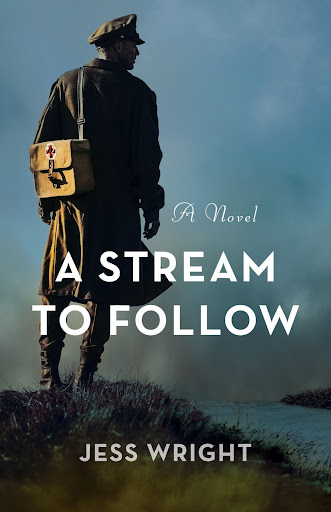 A compelling love story underscores Bruce Duncan’s journey to healing
A compelling love story underscores Bruce Duncan’s journey to healing

 Nora Riva Bergman is a law firm coach, author, and certified Atticus Practice Advisor. As a licensed attorney, Nora has coached lawyers across the country for over 15 years and brings a deep understanding of the practice and business of law to her work with lawyers, law firms, and bar associations. She is the author of 50 Lessons for Lawyers: Earn More – Stress Less – Be Awesome and 50 Lessons for Women Lawyers – From Women Lawyers. She is a graduate of the Leadership Development Institute at Eckerd College and is certified in the Conflict Dynamics Profile® developed by the Center for Conflict Dynamics at Eckerd College to help individuals and organizations deal constructively with conflict. Nora is also a graduate of Villanova University’s Lean Six Sigma Program and is certified in both DISC and EQ through Target Training International. Find out more about her at
Nora Riva Bergman is a law firm coach, author, and certified Atticus Practice Advisor. As a licensed attorney, Nora has coached lawyers across the country for over 15 years and brings a deep understanding of the practice and business of law to her work with lawyers, law firms, and bar associations. She is the author of 50 Lessons for Lawyers: Earn More – Stress Less – Be Awesome and 50 Lessons for Women Lawyers – From Women Lawyers. She is a graduate of the Leadership Development Institute at Eckerd College and is certified in the Conflict Dynamics Profile® developed by the Center for Conflict Dynamics at Eckerd College to help individuals and organizations deal constructively with conflict. Nora is also a graduate of Villanova University’s Lean Six Sigma Program and is certified in both DISC and EQ through Target Training International. Find out more about her at 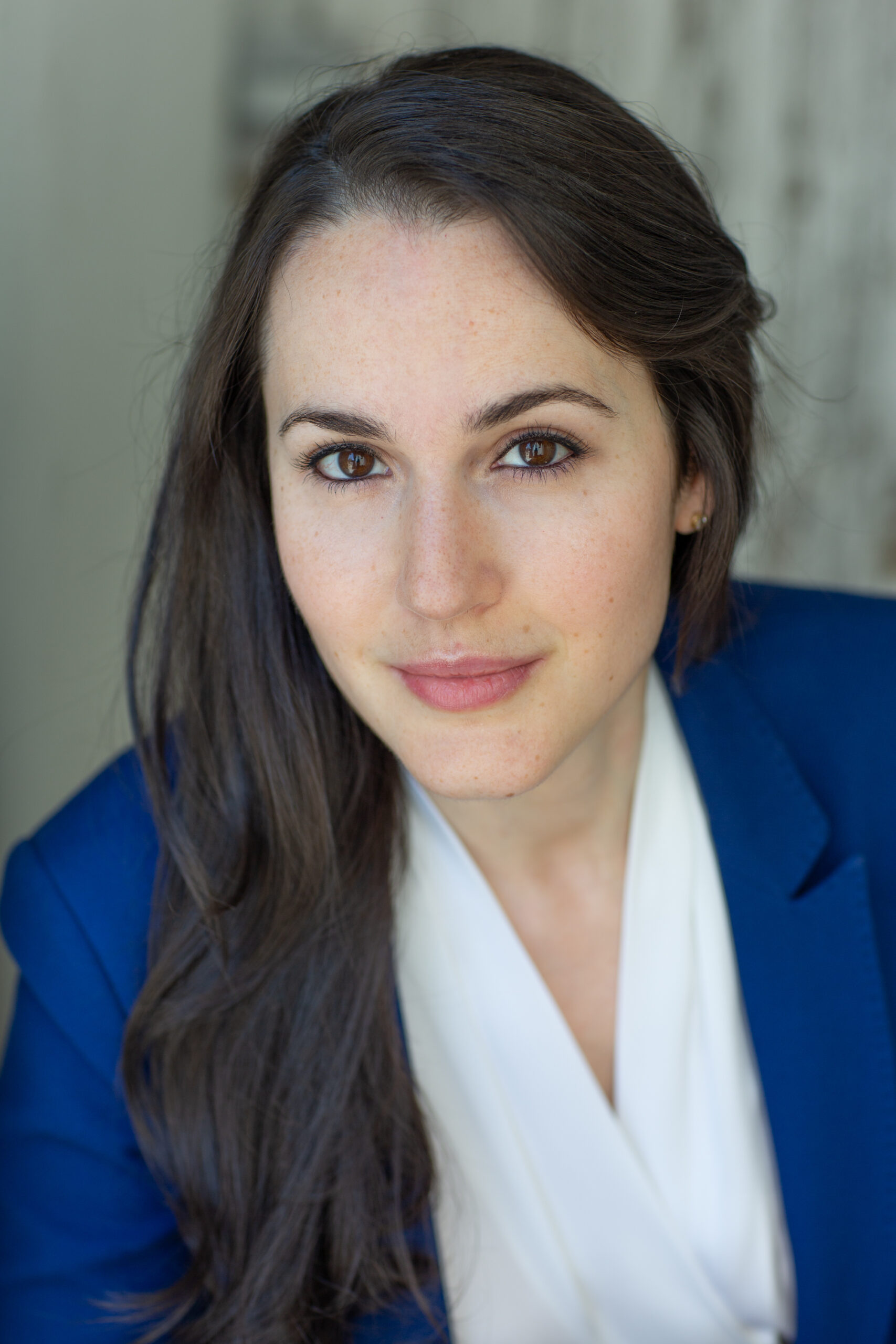 Chelsy A. Castro is CEO and Founder of Castro Jacobs Psychotherapy and Consulting (CJPC), a firm specializing in lawyer well-being. An attorney turned psychotherapist and performance coach, Chelsy counsels individuals and the organizations they work for on how to achieve their goals in healthy and productive ways. Chelsy’s publications and trainings focus on science-based skills and strategies for improving performance and increasing well-being in high-pressure professions. After practicing law as a multilingual attorney in the field of international regulatory compliance, Chelsy later earned her clinical degree at the University of Chicago and shifted her focus to lawyer well-being. Prior to launching CJPC, Chelsy designed, developed, and managed clinical programs for the legal profession, and provided evidence-based psychotherapy and training for lawyers, judges, and law students. Find out more about her at
Chelsy A. Castro is CEO and Founder of Castro Jacobs Psychotherapy and Consulting (CJPC), a firm specializing in lawyer well-being. An attorney turned psychotherapist and performance coach, Chelsy counsels individuals and the organizations they work for on how to achieve their goals in healthy and productive ways. Chelsy’s publications and trainings focus on science-based skills and strategies for improving performance and increasing well-being in high-pressure professions. After practicing law as a multilingual attorney in the field of international regulatory compliance, Chelsy later earned her clinical degree at the University of Chicago and shifted her focus to lawyer well-being. Prior to launching CJPC, Chelsy designed, developed, and managed clinical programs for the legal profession, and provided evidence-based psychotherapy and training for lawyers, judges, and law students. Find out more about her at 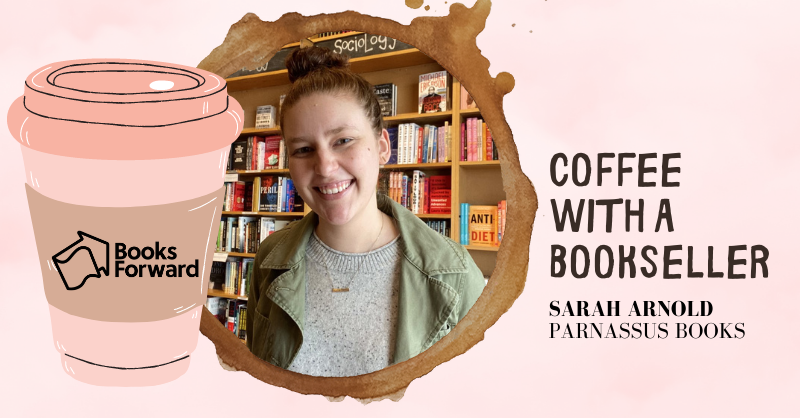
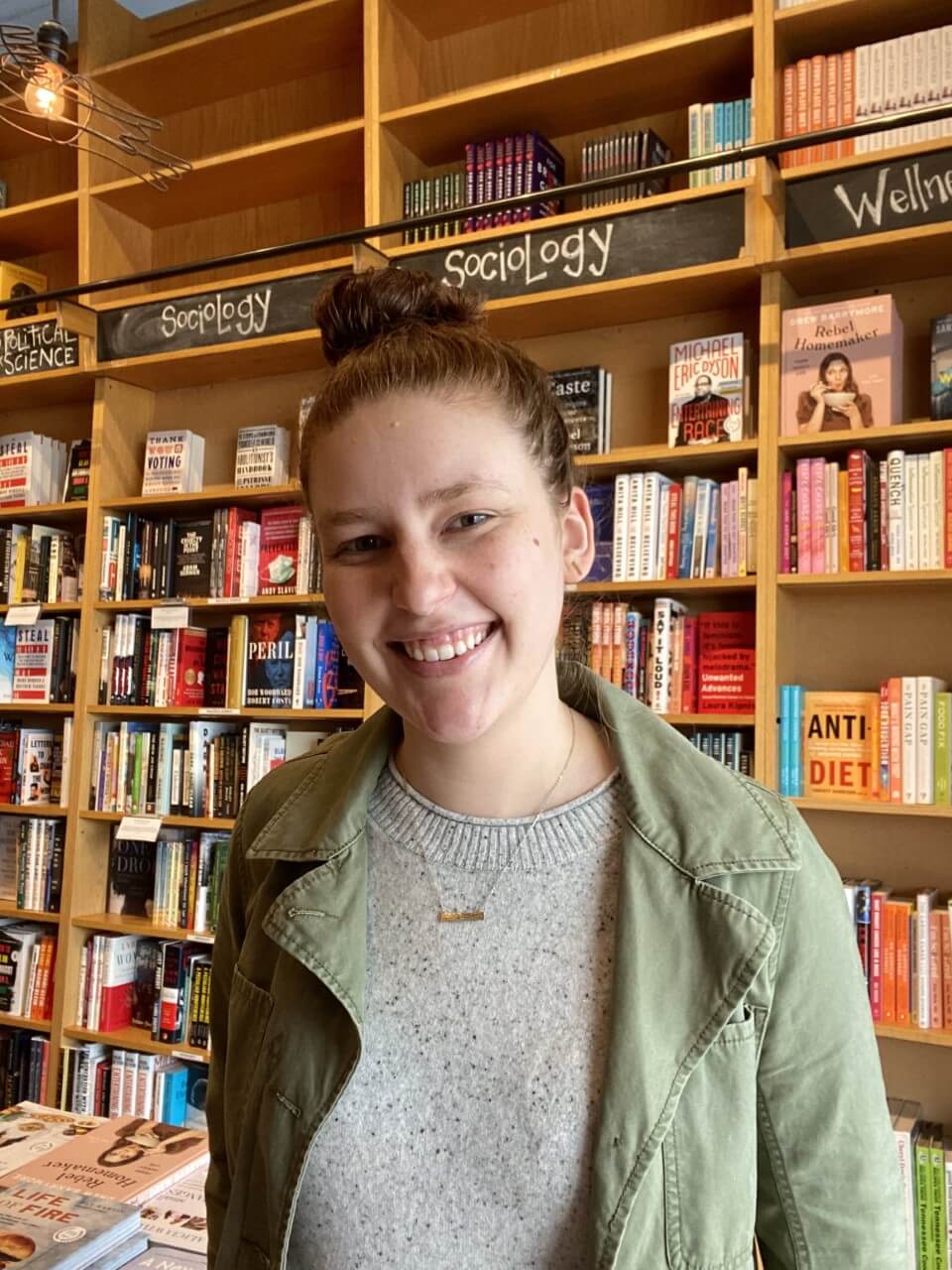 What’s your favorite area of the bookstore?
What’s your favorite area of the bookstore?
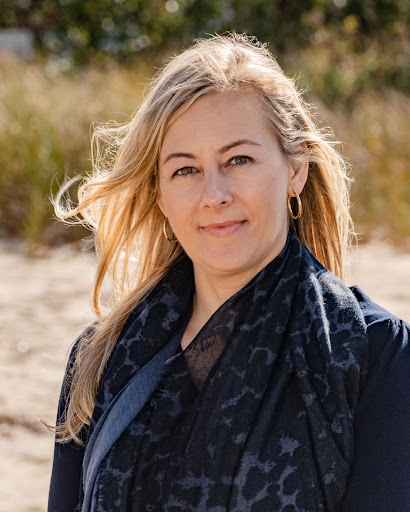 Tessa Wegert is the author of the Shana Merchant series of mysteries, which includes DEATH IN THE FAMILY, THE DEAD SEASON, and DEAD WIND (2022). A former freelance journalist, Tessa’s work has appeared in Forbes, The Huffington Post, Adweek, and The Economist. She grew up in Quebec and now lives with her husband and children in Coastal Connecticut. Find out more about Tessa at
Tessa Wegert is the author of the Shana Merchant series of mysteries, which includes DEATH IN THE FAMILY, THE DEAD SEASON, and DEAD WIND (2022). A former freelance journalist, Tessa’s work has appeared in Forbes, The Huffington Post, Adweek, and The Economist. She grew up in Quebec and now lives with her husband and children in Coastal Connecticut. Find out more about Tessa at 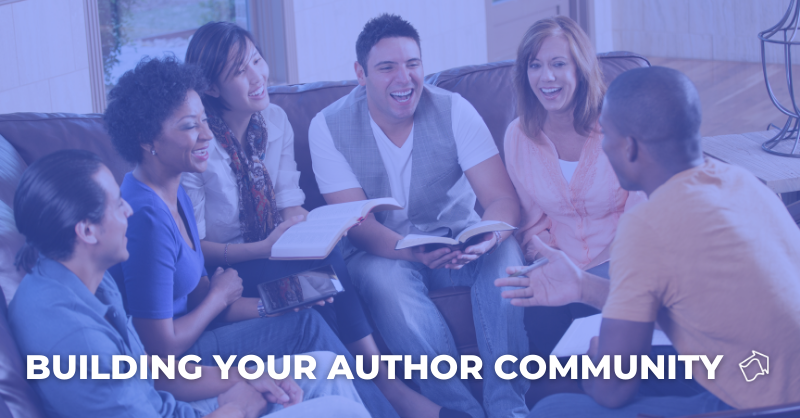
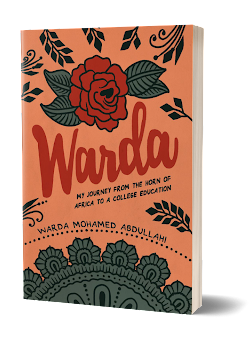 MINNEAPOLIS, Minnesota – In her powerful memoir, “Warda: My Journey from the Horn of Africa to a College Education,” Somali-American writer Warda Mohamed Abdullahi not only tells the story of her own resilience but also that of striving refugees around the world.
MINNEAPOLIS, Minnesota – In her powerful memoir, “Warda: My Journey from the Horn of Africa to a College Education,” Somali-American writer Warda Mohamed Abdullahi not only tells the story of her own resilience but also that of striving refugees around the world. Warda Mohamed Abdullahi currently resides in Brooklyn Park, Minnesota, with her hooyo and aabo. She recently graduated from Saint Catherine University and is taking a year off to be with her family, including her daughter Rahma Abu Bakar Ibrahim. Warda looks forward to continuing her journey towards her doctorate in medicine, her lifelong learning in Islam, and spending time with her family. Find out more about her at wardaabdullahi.com.
Warda Mohamed Abdullahi currently resides in Brooklyn Park, Minnesota, with her hooyo and aabo. She recently graduated from Saint Catherine University and is taking a year off to be with her family, including her daughter Rahma Abu Bakar Ibrahim. Warda looks forward to continuing her journey towards her doctorate in medicine, her lifelong learning in Islam, and spending time with her family. Find out more about her at wardaabdullahi.com. Laura Engel’s memoir, “You’ll Forget This Ever Happened”, reveals the dark truth of adoption in the 1960s
Laura Engel’s memoir, “You’ll Forget This Ever Happened”, reveals the dark truth of adoption in the 1960s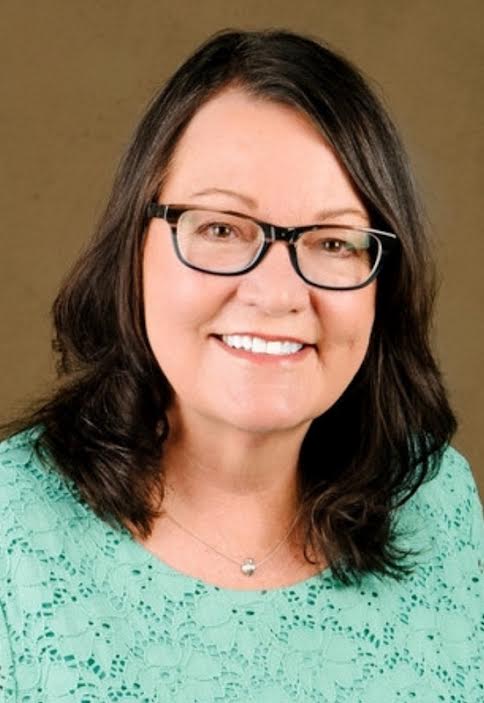 LAURA ENGEL: Laura L. Engel, born and raised on the Mississippi Gulf Coast transplanted to San Diego over 50 years ago. She is married to the love of her life, Gene, and the mother of five beloved grown children and an adored golden retriever, Layla Louise. Laura is the proud Grammy of 10 cherished grandchildren.
LAURA ENGEL: Laura L. Engel, born and raised on the Mississippi Gulf Coast transplanted to San Diego over 50 years ago. She is married to the love of her life, Gene, and the mother of five beloved grown children and an adored golden retriever, Layla Louise. Laura is the proud Grammy of 10 cherished grandchildren.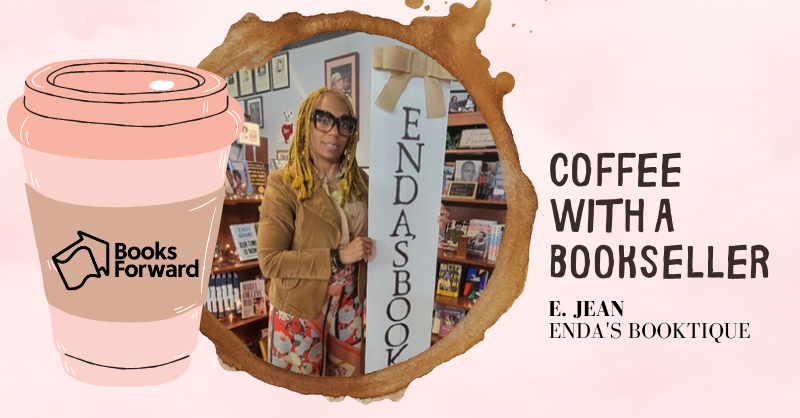
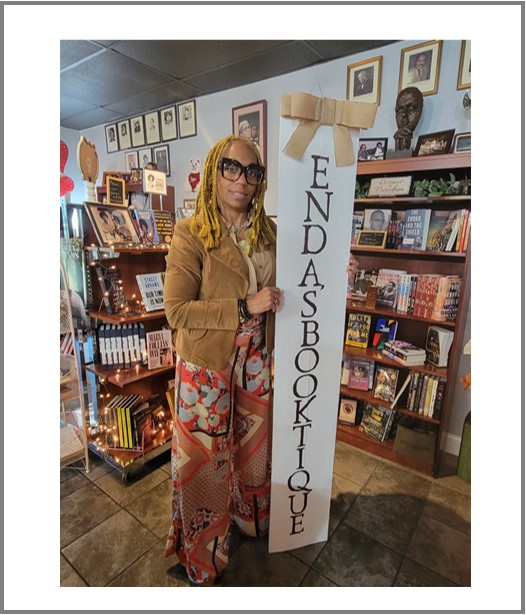
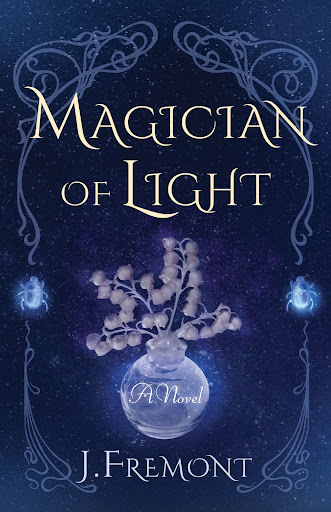 Veterinarian turned author weaves magical debut reminiscent of “The Woman in White”
Veterinarian turned author weaves magical debut reminiscent of “The Woman in White”
 With a cover designed by the author’s brother, Daniel Libeskind, and a compelling story inspired by their mother, the novel is a moving tribute to the bonds that connect us
With a cover designed by the author’s brother, Daniel Libeskind, and a compelling story inspired by their mother, the novel is a moving tribute to the bonds that connect us ABOUT THE AUTHOR:
ABOUT THE AUTHOR: ABOUT THE DESIGNER:
ABOUT THE DESIGNER:
